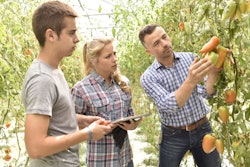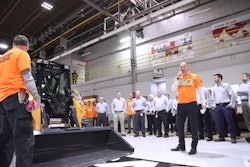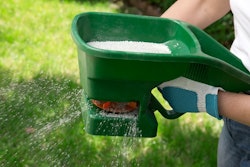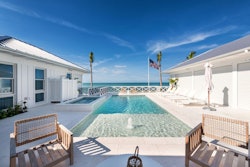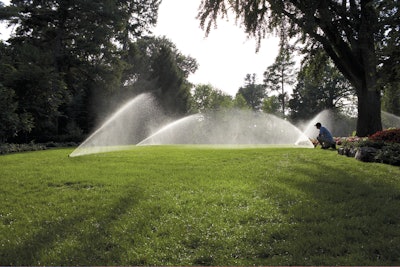 Photo: Rain Bird Corporation
Photo: Rain Bird CorporationWith spring well underway, customers can be eager to see their properties return to a luscious green and that means they want their irrigation systems turned back on.
Offering irrigation startups in the spring can be a win-win for both you and your clients. Customers are spared both frustration and money as you can do the process properly and you can ensure that the irrigation system is running properly and efficiently, preventing callbacks during your busy summer season.
“It’s very important that customers realize the value of a good quality spring turn on,” says Tom Horn, a trainer for the Rain Bird Academy and founder of All-n-One Outdoor Solutions based in Jefferson City, Missouri. “The service technician goes through each zone, checks the heads, makes sure the heads are properly adjusted and also makes recommendations.
Horn says the recommendations could be anything from changing the run time of the system as plants mature and need less water or offering customers system upgrades like high-efficiency nozzles.
“It is like a routine physical,” says Mitch Heiner, national irrigation product manager for Ewing Irrigation and Landscape Supply. “It is a quick checkup to make sure everything is functioning properly. It also provides the contractor the opportunity to provide value and further strengthen the relationship with the property owner, which can translate into continued business and referrals.”
Whether your clients are in warmer or cooler climates, conducting an annual irrigation maintenance in the spring is a good rule of thumb.
“Without a proper startup and full system testing and adjustment, it is impossible to discern the ‘as-found’ condition of the system and determine if there is any damage that occurred,” says Russ Jundt, founder of Conserva Irrigation, a national outdoor irrigation company. “Additionally, the system needs to be tested and optimized so that it is set up properly for a successful irrigation season. Conserva Irrigation does not use the vernacular ‘startup’ or ‘turn on’ because these phrases imply that this step is easy to perform. Instead, we use the coined phrase ‘summerization’ – the opposite of winterization.”
When to start up irrigation systems
As for when is the right time to start doing spring irrigation startups, or summerizations as Jundt likes to call them, this depends on a number of factors but the most important element is the average temperatures at night.
 Photo: Rain Bird Corporation
Photo: Rain Bird Corporation“What a lot of guys will do is they’ll look for the first full week without freezing temperatures,” says Chris Davey, product marketing manager for Toro residential and commercial irrigation products. “That’s kind of a common rule, but you have to be careful because we can have a sneak up winter.”
Depending on your area, having night temperatures stay above 32 degrees Fahrenheit for a week could happen anywhere between March to May. It is also important to ensure that the soil is thawed at least 12 inches deep.
Horn says that his company tends to turn on irrigation systems that have a backflow preventer earlier than systems that use pumps, as they are more susceptible to damage from any unexpected freezes that could occur.
Horn says that he looks at the long-range forecast as a guideline to see when night temperatures will stay above freezing consistently before turning on systems. He says that when there are unexpected cold snaps, they advise customers to turn their controllers off so the system won’t run.
Another element is the customer’s perception of need. If homeowners are calling early on and insisting you get their irrigation system up and running, sometimes it’s best to oblige them and simply warn them of the risks they run if the weather has yet to stay consistently out of the freezing temperatures.
“You always try to accommodate the customer, but you do warn them, if we turn your system on at the beginning of March or the middle of March, you have to be aware that if it gets down pretty cold you might want to notify us to re-winterize it,” Horn says. “So that usually deters them but there are some customers who are persistent, so you say, ‘Sure, we’ll come out and turn it on. However, here’s the possible consequences if you do that.’”
If a system is started up too early in the spring, landscape contractors run the risk of bursting pipes and damaging other elements of the irrigation system, resulting in an expensive mistake.
It is quite a balancing act between waiting out any late cold snaps and getting a head start early on before crews become too busy with other jobs to do a startup thoroughly.
“What often happens, what I’ve found out in my experience, is the first sign of a warm up, of warmer weather, contractors and grounds management crews get all excited and they want to turn the sprinklers on but they find they’re running out of time because they’ve got all other kinds of stuff to do,” Davey says. “Their customers want them to overseed and remove all the winter debris, dethatch, fertilize, weed control and all kinds of stuff, that gets on their plate so starting it as early as possible is the key.”
Spring startup checklist
When it is finally warm enough to start an irrigation system up, its best to run through a thorough startup checklist of all the major components to ensure the entire irrigation system is working properly and to find any damage or inefficiencies that need to be corrected.
Davey has broken the startup process down into the following five main steps.
1. Vent the system
“If you did a great job in the fall winterizing, then venting the piping system generally is the easiest one of the five steps because you pretty much did that in the fall,” Davey says.
This step makes sure the system is clear of debris and opening up the drain valves in the system. At all high points, there should be an air vent or a quick coupler and they should be opened as well. The sprinkler heads should also be turned to the on position. This allows the system to be open when you start to fill.
2. Adjust the pressure
Adjusting the pressure prior to filling the system is important to prevent a water hammer from occurring and it also ensures the safety of the technicians working on the system.
“As you fill a system, you want to regulate the pressure of the water going in there,” Davey says. “If you’ve got a pump system with 110 pounds, for example, you don’t want to open that up fully and crash that water through the system. Most textbooks and training sessions will teach you on startup to regulate the pressure to 50 psi or less.”
Most systems have a settable pressure that contractors can adjust.
3. Filling the system
Starting closest to the source, have crew members monitor open drains, sprinklers and quick couplers. Once the water has reached these points, technicians can close these drains and turn the sprinklers off to keep the water in the pipes. Move from the highest location to the next one until the air is completely evacuated and all venting locations have been closed. At this point, the system is charged. Davey says the slower you fill the system, the safer it is.
“Essentially, you’re doing backward what you did in the fall,” he says. “Instead of evacuating the system, you’re refilling it.”
4. Activate the sprinklers
Maintain the 50 psi during this step and turn on the sprinklers one by one or zone by zone, depending on how they are controlled to allow more air to escape.
“You start to listen to how these sprinklers or other components in the system are operating,” Davey says. “You can hear if something is wrong. You can hear a leak. You can hear if there is a break in the pipe. You can see if there’s water gurgling up around the sprinkler instead of coming out of the nozzle. You can see if there is debris trapped in the sprinkler over the winter season and they aren’t sprinkling right. During the phase of activating, you want your team of technicians to be on the lookout and identity all and any system component issues that come up so that they can make repairs at that time.”
5. Confirm all the air has been removed
This is simply a check to make sure after all the system components have been repaired the system operates at the normal operating pressure. Observe the system and make sure everything is operating correctly.
If there are problems with the system that crews find during startup, these tend to be pretty obvious such as the backflow preventer leaking or if the main line won’t pressurize.
“Significantly lower pressure to one or more heads on a line usually points to a pipeline break,” Heiner says. “Geysers coming from nozzles and other emission devices are easy ways to determine damage as well.”
Common mistakes
There are many mistakes that can happen during a spring startup from causing a water hammer to rushing through the process and overlooking system problems.
“Our service technicians sometimes get in a hurry and don’t let that system go through a complete cycle as far as observing each head because I’ve gotten calls after we’ve done turn-ons where the customer says the sprinkler head only goes to one place and then stops,” Horn says. “Well, I know what happened. Our guys probably got in a hurry and only did a one- or two-minute test and didn’t observe that head do its full pattern, so it’s stuck at a certain point and they don’t catch that.”
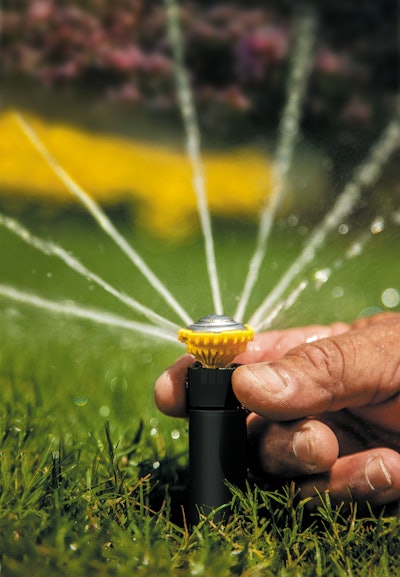 Photo: Rain Bird Corporation
Photo: Rain Bird CorporationDavey agrees that when crews become hurried, they tend to end up spending more money, time and energy fixing the issues because they didn’t follow the process properly the first time.
While it’s important not to rush, it’s also crucial to ensure there are enough technicians for the job. Some residential sites will need two to three employees, while commercial systems could need anywhere from six to 10 technicians.
“Most of these systems are big enough where one person can’t do an effective job themselves, so it’s usually a group of people that do it,” Davey says.
Some of the common mistakes that Jundt says can happen include not locating or utilizing an isolation valve on a looped mainline, not double checking that the water shut off/gate valve is fully closed and not properly turning all ball valves and test port valves to a 45-degree angle.
Another major mistake to avoid is not fixing the problems after finding them.
“If something needs repairing, it should be done right away, and if they don’t, a lot of contractors if they find a broken sprinkler, they will cap it off and say I’ll come back later,” Davey says. “Well, a lot of times they don’t come back later and so their customers end up complaining because when the irrigation systems start up, they don’t see a leak because it’s capped off, but they see a brown spot in the grass because it’s not getting watered.”

